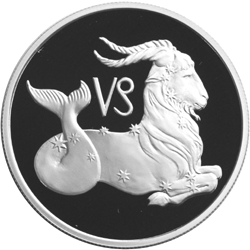A recent paper (2024) by Linda Evans and her team discuss a petroglyph with a combination of the apparent fore-quarters of a quadruped and the rear half being a fish tail, discovered at a rock art site in Upper Egypt. Their analysis led to conclusions that it represented the goat-fish symbol for the constellation Capricornus.
“A new study by Dr. Linda Evans and her colleagues from Macquarie University, Australia, published in the Journal of Egyptian Archaeology, has recently identified what may be an Egyptian petroglyph depicting the zodiac sign Capricornus, a hybrid creature with the forequarters of a goat and the body of a fish. Zodiac symbols are completely unattested in Egyptian rock art, making this image the only known example. By studying the history of the zodiac sign, its introduction into Egypt, and its use, the researchers were able to determine the likely period of and possible reason for its creation.” (Oster 2024)
At some point in prehistory hominins came up with a number of ideas concerning the night sky. One was that the stars made patterns that they believed that they could identify with beings, creatures, or implements. With this belief established it is not a long way to the assumption that these stellar creatures or beings influence life here on earth. “The ‘goat-fish’, a mythical creature incorporating the horned forequarters of a goat and the torso of a large fish, has long been known from the ancient Near East and Mediterranean regions. It first appeared in Mesopotamia, where it later represented the zodiac sign of Capricornus. There is also sporadic evidence of the sign in Egypt, beginning in the Graeco-Roman Period. Here we present an unusual petroglyph at the rock art site of el-Hosh in Upper Egypt (70 km north of Aswan, on the west bank of the Nile), which depicts a hybrid mammal and fish figure that we propose may also represent Capricornus.” (Evans et al. 2024) And, once we have accepted the proposition that what happens in the heavens influences life here on earth, then it is only natural to look for patterns or movements to try to analyze what they portend, and to develop rites and rituals to try to influence these portents.
Sandee Oster (2024) described the development of Capricornus as a symbol for a constellation. “The first occurrence of something resembling Capricornus occurred in Mesopotamia, where the Sumerian got Enki and the Akkadian equivalent Ea were usually depicted as bearded men with horned caps, wearing gowns. At the shoulders of these gowns, water streams filled with fish would spout. This later evolved into the first recognizable depiction of a goat-fish hybrid at the feet of the god on cylinder seals dating to ca. 2112-2004 BCE.” (Oster 2024) This cylinder seal was not illustrated.
According to Oster, the Greeks got the idea of the zodiac from the early Mesopotamian civilizations. “From Mesopotamia, the zodiacs and their associations eventually spread to Greece (5th century BCE) and from there to Rome (1st and 2nd century CE). By at least 300 BCE, zodiacs were known to Egypt and their earliest depictions could be found on zodiac ceilings in Egyptian Ptolemaic temples such as the temple Montu and Rattawy at Armant (c. 44-30 BCE). Later these zodiac symbols, including Capricornus, occurred in Roman-era temple ceilings, coffin lids, tombs, and even coins.” (Oster 2024)
Interestingly, I can find no mention of a capricornus or goat-fish hybrid therianthrope anywhere online as being part of the Egyptian zodiac. Capricorn is one of the constellations in the Greek zodiac suggesting the possibility that this would have been introduced into Egypt by the Greeks or Romans
Linda Evans et al. (2024) came to the same conclusions when discussing the potential date of the petroglyph in question. “If a connection with Capricornus is accepted, a Graeco-Roman date for the petroglyph’s production may be possible. Furthermore, the creature’s outstretched tail possibly indicates a period earlier than the second century CE, when the Roman loop-tailed version of Capricornus became popular. It should be noted, however, that it has been proposed that Egyptian knowledge of the zodiac could have come directly from Mesopotamia, rather than via Hellenistic Greece.” (Evans et al. 2024)
Evans et al. discuss whether the possible origin of the symbol could be Mesopotamian or Graeco-Roman and note that if it was Mesopotamian the goat-fish could predate the Graeco-Roman Period. Their conclusion, however, is that it is more likely to have been created between the first century BCE and the end of the first century CE. One major clue that led them to this conclusion is the presence of Greek script carved on a nearby petroglyph panel.
NOTE: Some images in this posting were retrieved from the internet with a search for public domain photographs. If any of these images are not intended to be public domain, I apologize, and will happily provide the picture credits if the owner will contact me with them. For further information on these reports you should read the original reports at the sites listed below.
REFERENCES:
Evans, Linda, Fred Hardtke, and Wouter Claes, 2024, The Goat-Fish of El-Hosh: An Unusual Petroglyph Identified, The Journal of Egyptian Archaeology Online. Accessed online 20 November 2024.
Oster, Sandee, 2024, First ever goat-fish petroglyph reveals Egyptian understanding of zodiac symbols, 19
November 2024, Phys.org. Accessed online 20 November 2024.













No comments:
Post a Comment